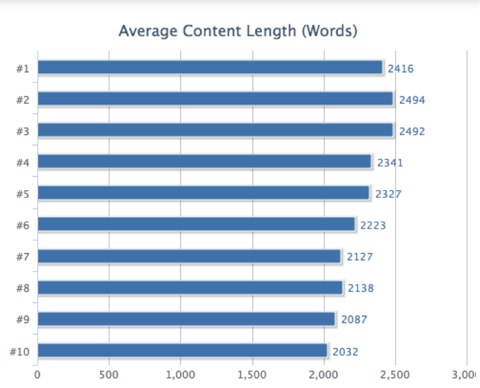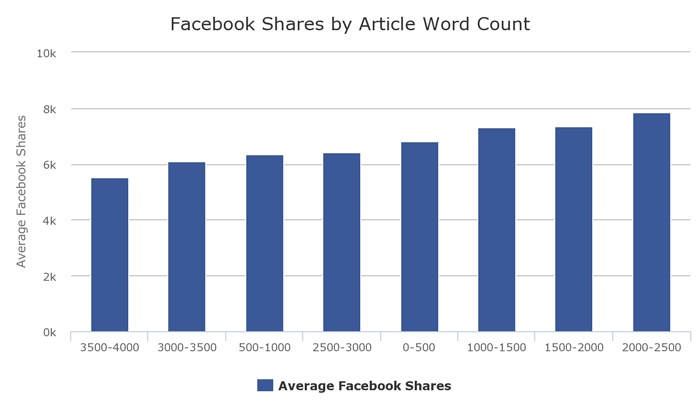
The fact that you’re reading this blog right now is proof that long-form content is not just for magazine subscribers and book readers. Though the Internet is characterized by a bombardment of messages, fast-loading pages and frenetic click-throughs, there is still a rightful place for longer pieces of content spanning 1,500 words or more.
Long-form articles, blogs, whitepapers, eBooks and newsletters promise readers everything they need to know on a given topic all in one convenient place. Anyone can spew out a piddly 400 words of generalized garbage, but it takes a more skilled writer with a love for research and a better understanding of the topic to churn out thousands of words on a given subject.
Of course, paying someone to spend the time and energy writing a really, really, really long piece of content naturally costs more. You may be wondering: “Is it truly worth the added expense for just one piece of content, when you could feasibly be paying the writer for several smaller pieces?” The answer is very much a personal decision that depends on several factors. Here are eight reasons why long-form content may be a worthwhile investment for you in the coming year.
[clickToTweet tweet=”8 reasons why long-form content may be a worthwhile investment for you in the coming year.” quote=”8 reasons why long-form content may be a worthwhile investment for you in the coming year.” theme=”style3″]
8 Reasons to Use Long-Form Content
1. Rank better in the search engines.
Want to get ranked in the top 10 search results? The answer could be long-form content, according to a much-cited 2012 study by serpIQ, which found that the average content length of top 10 posts was 2,000 words or more. The #1 ranking article contained an average of 2,416 words, in fact!
Check out the word counts on serpIQ’s study of top 10 search engine results:

Image Source: QuickSprout.com
It logically stands to reason that the more words you have on the page, the more strings search engines have to connect you to search terms. Pandu Nayak, technical staff member at Google, went so far as to say:
“Users often turn to Google to answer a quick question, but research suggests that up to 10% of users’ daily information needs involve learning about a broad topic. That’s why today we’re introducing new search results to help users find in-depth articles.”
In other words: you should optimize your content plan to include quality long-form articles if you want added search engine love, featured as an “in-depth article.”
2. Get more social shares.
Social links act as signals to the search engines that you’ve created something worthwhile. Marketing Expert Neil Patel ran the numbers on his posts and found that those with greater than 1,500 words received an average of 68% more re-tweets and 22.6% more Facebook shares. He’s not the only one to revel in such analysis.
[clickToTweet tweet=”Content with more than 1,500 words receive an average of 68% more re-tweets. – @NeilPatel” quote=”Content with more than 1,500 words receive an average of 68% more re-tweets. – @NeilPatel” theme=”style3″]
Liam Corcoran over at News Whip noted that some of the most-shared pieces of 2013 has astounding word counts — including a 3,535 word transcription of a lecture by Neil Gaiman on the importance of reading (220,000+ shares) and this 2,342-word Huffington Post piece on “happiness habits” (153,000+ shares).
In a study of viral content, OkDork.com notes that “the longer the content, the more shares it gets, with 3,000-10,000 word pieces getting the most average shares — 8859 total average shares.”
Kissmetrics found that the optimal number of words for a Facebook share is 2,000 – 2,500. These articles receive an average of 7,846.8 shares — which is 15% greater than articles with 0-500 words and 24% greater than articles with 500-1000 words.

Image Source: Kissmetrics.com
You’ve got to step up your game over at LinkedIn, however. The best performing word count there was 3,500-4,000 words, averaging 251.9 shares.
3. Convert more traffic into buyers.
Perhaps more telling than the number of social shares in Neil Patel’s informal analysis was the association between word count and conversions. On average, his long-form content performed 40-50% better at converting traffic into subscribers or paying customers.
Other companies observed modest — yet noteworthy — gains when they began studying the performance of their long form content. Highrise Marketing saw a 37% increased conversion rate when running a longer version split test for a client. Crazy Egg saw a 30% increase in conversions by providing their constituents with longer answers to their most pressing questions.
Here and there, you will also find companies citing much higher conversion rates. GrooveHQ improved conversions 100% with a web redesign featuring long form content after a surveyed prospect said of their site: “There’s no narrative, the messaging is all over the place and it doesn’t give me a single good reason to do business with you.” Conversion XL also cites clients who more than doubled their conversion rates using longer copy.
So there you have it! As Dr. Charles Edwards, former dean of the Graduate School of Retailing at New York University, quickly summarized: “The more facts you tell, the more you sell!”
4. Stand out from the competition.
Despite all we know about the merits of long form content, it seems most content producers are still unwilling to make the shift. In their analysis of viral content, OkDork found “There were 16 times more content with less than 1000 words than there were content with 2000+ words.” In turn, this means there is less competition at this level of in-depth coverage, so “it’s easier to stand out,” they conclude. That’s great news for brands looking to build a solid reputation as thought leaders and reliable sources of information within their respective industries.
You Might Also Like: 8 SEO Copywriting Myths To Avoid
5. Deliver more value.
Not only does long form content help your business demonstrate expertise and credibility, but it also offers your audience lots of value. “These actionable guides showcase content marketing at its most helpful, and most effective; they cover complicated topics in insane detail, and lay-out step-by-step solutions,” says Kapost. As a result, “You can expect their trust, gratitude and custom in return.”
In delivering more value to your customers, you’re also pushing your internal team to delve deeper into topics relevant to your industry and expand their knowledge. So, really, you’re providing your business with more value on multiple levels, too!
6. Keep your brand front and center.
Short content has a short life cycle. Readers needn’t invest much time into reading it and the turnover rate on your blog will be higher as a result. More comprehensive content will improve your website statistics by encouraging people to spend more time interacting with your brand. As Kissmetrics explains, “More time = more trust.” They found that one of their longer guide pages caused people to stay on page 40% longer and look at 25% more pages than the average visitor who landed on a page with shorter content.
7. You can re-purpose it.
The Content Marketing Institute recommends repurposing content to cut down on curation time, leverage research for use across several different projects, serve multiple audiences with different types of content and extend your content’s longevity.
Long form content is the gift that keeps giving. When you create a content gem, you can later break it up into a series of shorter articles and add visual elements or video to repackage into something new. Another option is to take the article and include it in a much longer ebook that you can sell or use to get lead emails.
You May Also Like: 8 Ways To Repurpose Old Content
8. You can profit from it directly.
We can’t promise you’ll make a cool million off selling eBooks, but we do recommend creating this type of long form content with strategic objectives in mind. Well-written eBooks are especially useful if you’re a B2B company with useful information to share. Zerys points out the many advantages of eBooks:
- – They establish expert status.
- – They have perceived value.
- – They’re (relatively) quick to produce.
- – They’re convenient.
- – They do the selling subtly.
- – They’re interactive with tons of clickable links.
Using eBooks in your content marketing strategy can boost traffic to your website substantially and drive your number of leads through the roof, even if you give it away for free. If you choose to charge a small fee for the download, you can create a passive income for yourself that accumulates over time.
According to the 2014 B2B Content Marketing Benchmarks Report, 34% of content marketers are using eBooks as a tactic, while 57% of B2B users consider eBooks to be a particularly effective tool. In addition to the benefits already mentioned, Top Rank Blog says that an eBook “captures target prospect when they are most primed to buy when registering for the download” and “helps with search engine optimization because [the] content is searchable.”

Image Source: PageLizard.com
Increase Your Conversions with Long-Form Content
It goes without saying: longer content does not always produce better results. It’s easy for beginners and untrained writers to ramble or stray off on irrelevant tangents in a pointless attempt to bloat the topic. Our writers never start out with the intention of writing to a set word count, but we often find ourselves digging our heels in pretty deep and easily surpassing the 1,000-word mark at the very least. If we can say what we need to say in fewer words, we do. If we feel the topic warrants further exploration, we go with it. We make sure that the content is designed for your audience and is relevant to your industry.
Need help with your long-form content developing and inbound marketing strategy? Contact us today and learn how our inbound marketing team can help transform your company.


